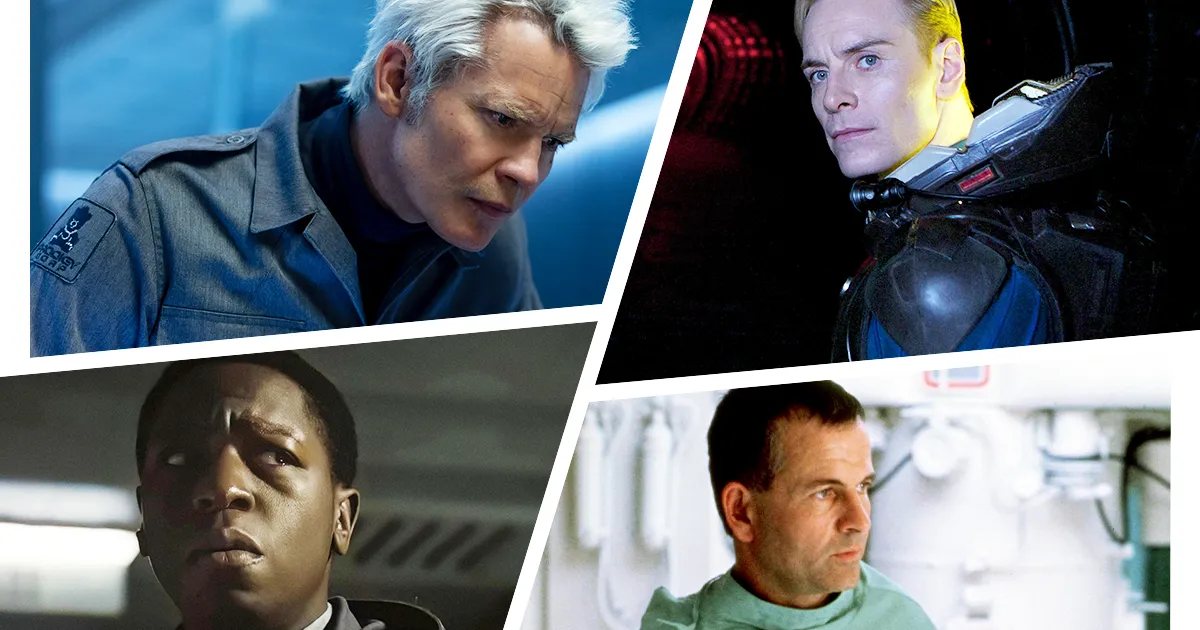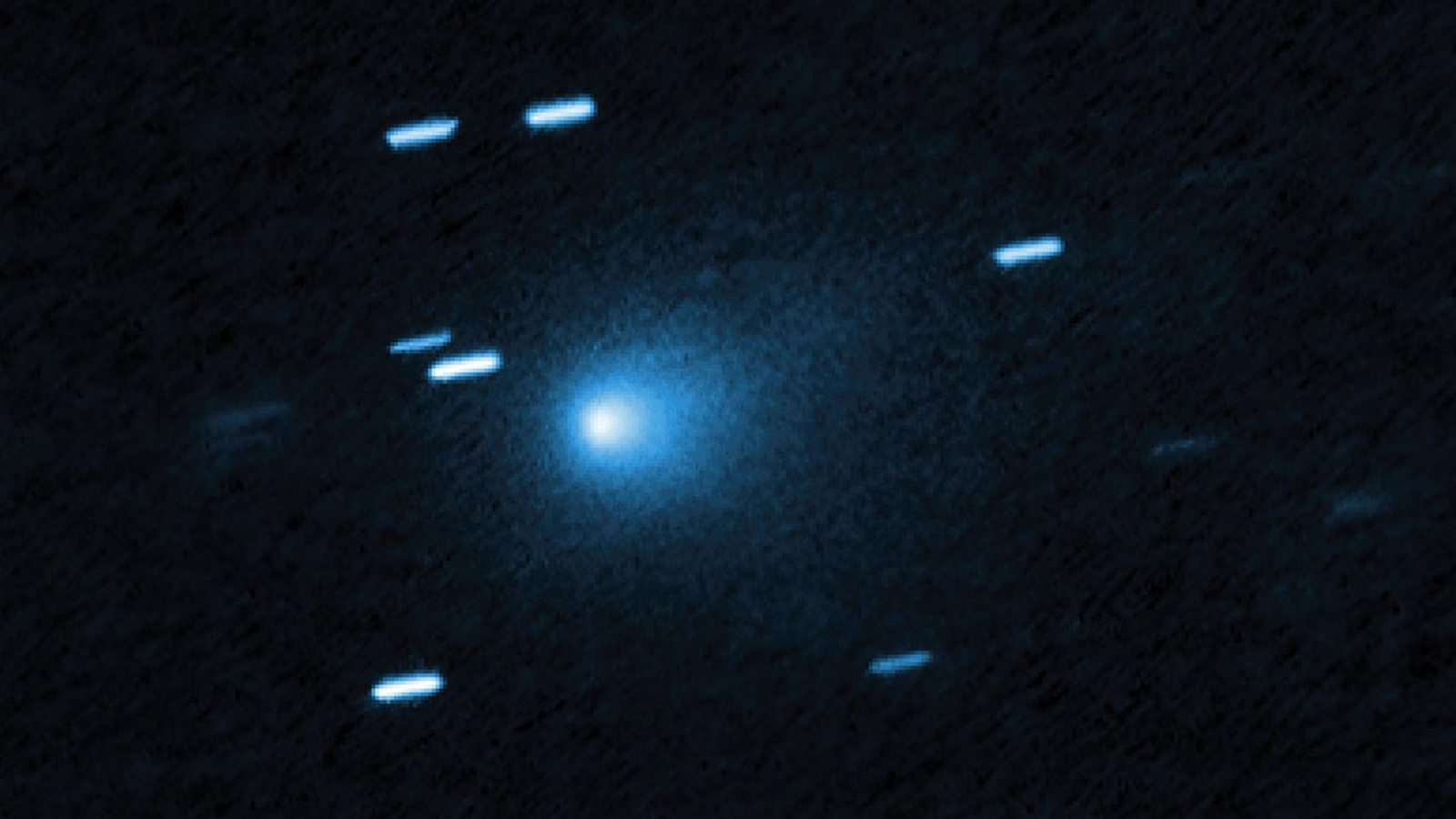
Spoilers ahead for all of the Alien films and Alien: Earth.
Do androids dream of electric sheep? What about plain-Jane organic sheep who’ve been hijacked by a grapefruit-size eyeball with tentacles? Alien: Earth, Noah Hawley’s ambitious, oft-confounding TV expansion of the slimiest franchise in cinema history, isn’t afraid to ask the big questions. Specifically, the ones about what makes us human and whether we’re bound to acknowledge the humanity — for want of a better word — of machines that think, feel, suffer, and dream.
It’s ironic, then, that the credits for Alien: Earth identify the show as “based on elements created by Dan O’Bannon and Ronald Shusett,” screenwriters of 1979’s landmark Alien, without naming producers David Giler and Walter Hill given that the latter two are most responsible for the ideas around AI sentience that seem to most excite Hawley’s interest. (It was the same for Alien director Sir Ridley Scott: When he returned to the series after a 33-year furlough to direct 2012’s Prometheus and 2017’s Alien: Covenant, he chose to make Michael Fassbender’s megalomaniacal android, David, the principal character whose journey spans both Alien prequels.) Yes, the basic scenario about a spaceman getting raped, returning to his ship, and giving unholy birth to a monster that hunts down his crewmates came from the original writing team. But the twist that Ash, the Nostromo science officer played by Ian Holm, turns out to be an android placed aboard the ship to ensure the survival of the hostile specimen the crew had been unknowingly dispatched to collect was Giler and Hill’s contribution.
So Alien: Earth’s cadre of synths, hybrids, and cyborgs owes at least as much to their “elements” as it does to O’Bannon’s and Shusett’s. As does the season-one finale’s minor rug-pull that Atom Eins, the right-hand “man” of insufferable tech-bro-hybrids creator Boy Kavalier, is himself a synthetic. This is a surprise only because Kavalier’s other aide-de-camp, Timothy Olyphant’s white-haired, Spock-like synth, Kirsh, has worn his artificiality as a badge of honor all season; you suspect Ash would’ve done the same had he not been ordered to pose as a human member of the Nostromo crew. So while there are any number of metrics by which the series’ various “artificial persons” — to use the polite term — might be ranked, this one will evaluate them by how persuasively human they are. That’s an impossibly vague standard, of course, but also the one most appropriate to a list inspired by Alien: Earth’s exploration of humanity extended and consciousness transferred.
8.
Rook (Alien: Romulus)
Fede Alvarez’s 2024 greatest-hits frightfest was the Alien-ad’s first lega-sequel, taking place during the 57-year gap between Alien and Aliens but paying homage to every entry in the series to date. It’s a tactile, skillfully made tribute that would’ve worked even better without so many callbacks to the earlier films — the most reviled of which was the inclusion of Rook, an android of the same model as Ash voiced by Daniel Betts but with the unsettling re-created visage of Ian Holm. Holm died in 2020, but Alvarez reached out to the actor’s estate to secure its blessing to re-create his likeness circa four decades earlier. A life cast of Holm’s head made in 1999 for the Lord of the Rings trilogy was the starting point for the Romulus effects team, which built a life-size animatronic puppet to interact with the actors on set, then used deepfake technology to dial in the illusion of Holm’s circa-1979 mug.
This would all be creepy even if the results had been more persuasive. (As it was, they were shaky enough that Alvarez told Empire he convinced Fox to spend a little money to correct the subpar CGI work seen in the theatrical version prior to the release of Romulus on home video.) There’s a grim irony to this glaringly artificial re-creation of Holm being undertaken in service of a callback to the franchise’s original android in disguise: Even if we didn’t first see Rook minus the bottom half of his body, off-brand entrails dangling from his chest cavity, we’d know right away he was just another piece of Weyland-Yutani equipment and loyal to the end.
7.
David (Prometheus and Alien: Covenant)
David (Michael Fassbender), the artificial son of synth pioneer Peter Weyland, has been alive for all of about a minute before his existential crisis sets in. The Lawrence of Arabia–obsessed droid who minds the ship while its crew is in hypersleep turns out to be the supervillain of the whole saga in Prometheus, secretly infecting the crew with alien goo. Not until the flashback opening scene of Covenant, released five years later, do we see him awaken and immediately question his creator.
The first decision David makes for himself is what to perform on the piano after Weyland commands only that he play. David goes with Wagner’s “The Entry of the Gods into Valhalla.” Is it any wonder he chooses to carry on the work of the ancient, chalk-complected Engineers rather than try to curry favor with the puny humans who are just going to die on him anyway?
6.
Kirsh (Alien: Earth)
Kirsh isn’t human and isn’t interested in being human — or to use the synonym he deploys in the Earth pilot, “food.” He’s bemused by Boy Kavalier’s decision to have the synthetic body of hybrid protagonist Marcie/Wendy electrically replicate the hormone-induced emotions her sickly human vessel once did.
That doesn’t mean he’s without human frailties like pride, arrogance, and irritation, which are readily on view whenever his maker condescends to him, which is often. (Condescension is Boy Kavalier’s default settling.) “Assume I’m ahead of you, always,” Kavalier tells him, dismissing Kirsch with a patronizing, “Don’t you have little experiments to run?” The beat for which Kirsh holds eye contact with his maker before turning to obey is a human indulgence whether Kirsh wants to admit it or not. This is another way in which Timothy Olyphant’s performance echoes Leonard Nimoy’s as the conflicted half-human Spock, right down to his favorite adjective: “Fascinating.”
5.
Walter (Alien: Covenant)
Walter, the friendlier, less independent production-model variant of David, also played by Michael Fassbender, is the first of our mid-list trio of droids who keep the jittery, fragile humans around them at ease by being childlike. This is another bit of terrain that Hawley farms in Earth, focusing his story on the “Hybrids,” milking the frightening prospect of beings with moppet-level emotional stability and superhuman bodies for all its worth. But these three appear to suffer no internal schism. To the extent they display emotion, it seems to give them pleasure to be of use to the humans around them, especially when the humans acknowledge their contributions.
Walter, the crew synthetic aboard the colonization ship Covenant, is one of these. His Fassbender-on-Fassbender exchanges with his more willful ancestor David are the richest part of the film. “You were too human. Too idiosyncratic,” he tells David. “Thinking for yourself.” What Walter diagnoses as too human in David is in fact something more akin to a God complex, which is why I’m arguing Walter is the more human of pair. This conversation happens in a chamber David has decorated with his various drawings and inventions, expressions of individuality Walter and his brethren have been denied; Walter is neither gifted with David’s imagination nor burdened by his loathing of humankind. Their subsequent mano a mano makes it clear that while Walter is the superior machine physically, the cunning that’s been programmed out of him makes him just as vulnerable to David’s schemes as his crewmates.
4.
Andy (Alien: Romulus)
David Jonsson’s dad-joke-loving gentle “brother” to Cailee Spaeny’s Rain is an ND-255 — an obsolete Weyland-Yutani bot her father found in a junk heap and fixed up to keep her company, knowing that he and Rain’s mother were soon to perish of illnesses contracted in the mines of the sunless Weyland-Yutani settlement called Jackson’s Star. Like so many kid brothers, Andy is so curious and credulous that he can’t be left alone. That all changes once Andy receives a chip upgrade that transforms him from little more than a pet into a fearless and resourceful ally, but it also reassigns his loyalty from Rain to Weyland-Yutani.
Jonsson’s nimble performance makes Andy equally compelling as a sweet kid and an enigmatic problem solver. “Today I can finally help,” he tells Rain. “And you won’t see me as a child anymore.” (Miraculously, Jonsson is never annoying, as the young-adults-playing children on Earth frequently are.) It also keeps us guessing as to whether he’ll ultimately turn out to be a Bishop or an …
3.
Ash (Alien)
As the first of the Alien-ad’s shady synths, and one of only a handful whose artificial origins were not known to us from the jump, Holm’s Ash has to rate high on this list. His palpable distance from the other Nostromo crewmembers can be explained by the fact he’s a new addition to their ranks. When Ash violated protocol by letting Dallas, Kane, and Lambert back aboard the Nostromo despite the pulsating parasite attached to Kane’s face, he was obeying orders from the Weyland-Yutani C-suite, though we don’t learn that until much later. All we know upon a first viewing is that Ash disobeys Ripley, who with Dallas off the ship is the ranking officer onboard. Ignoring a woman in the workplace when she’s clearly right was certainly believably human behavior for a man in 1979, in 2122, or today.
2.
Bishop (Aliens and Alien 3)
James Cameron’s sublime Alien sequel is all about reversals. One of the best is that Bishop, the gentle but highly capable droid played by Lance Henriksen, turns out to be the white-blooded equivalent of True Blue. Ripley spends most of the film fully expecting him to stab her in the back, but it’s Bishop who gets stabbed — impaled, in fact, on the spiny tail of the stowaway Alien Queen, which then rips the bot in half. Just moments earlier, he’d swooped in behind the controls of a drop-ship to rescue Ripley and surrogate-kiddo Newt from a collapsing atmosphere processor that promptly explodes, taking the Alien hive and the entire Weyland-Yutani colony on LV-426 with it. He has just enough time to bask in Ripley’s fond acknowledgment — “You did okay” — before he saves her ass again, distracting the mama bug long enough for Ripley to suit up for battle in the Power Loader.
It’s always been a little murky why Bishop isn’t in league with Paul Reiser’s company man Carter Burke, who clearly expected the android would obey his orders to keep the captured face-huggers Bishop is seen dissecting intact “for return to the company labs.” But Bishop’s choice to rescue Ripley and Newt rather than fly back to the Sulaco with whatever specimens he could save demonstrates at least that the “behavioral inhibitors” that will not allow him “to harm, or through omission of action, allow to be harmed a human being” are stronger than any lines of corporate code that might be scrolling through his brain.
And while this is not the forum to discuss Henriksen’s role as human man Charles Bishop Weyland in Alien vs. Predator, retconned away by Prometheus (itself partially retconned by the events of Alien: Earth), I’d be remiss not to account for the two Bishops in Alien 3. There’s the mangled Bishop we’ve come to love, who Ripley briefly reconnects to access the flight data recorder of the Sulaco, only to have him ask her to unplug him. (“I’ll never be top-of-the-line again,” he laments. “I’d rather be nothing.” Vanity: a human trait.) Then there’s the Bishop who arrives at the end of the movie to try to persuade Ripley to let him take her into custody and surgically remove the alien gestating inside of her. Ripley assumes he’s another Bishop-model synth, but he tells her he’s the human who designed Bishop in his own image. Only in the 2003 extended edition of Alien 3 released as part of the Alien Anthology Blu-ray set is it made explicit that on this point at least, he isn’t lying. When one of Ripley’s allies hits him in the head with a pipe, he bleeds red blood and yells, “I’m not a droid!”
And this not-a-droid is still not the most human character on this list. Because the unlikely champion of our Most Person-Like Artificial Person is the disaffected-yet-idealistic synth who goes by the name of …
1.
Call (Alien: Resurrection)
Look, I’m not here to try to persuade anyone that this Joss Whedon–scripted, Jean-Pierre Jeunet–directed afterthought is good. But it does feature the series’ most convincingly human android. It also introduces an entire egg-ship load of ideas that Hawley would circle back to a generation later for Alien: Earth, not least of which is that this version of Ripley is a human-xeno hybrid who can communicate with other xenomorphs.
Half a decade after Weaver’s character had been killed off at the end of Alien 3, the star was lured back by the prospect of playing not Ellen Ripley, who died two centuries before the events of Resurrection, but Ripley 8, the superpowered by-product of a long-running project to clone an alien queen. That made Winona Ryder’s Call the Ripley figure of this movie: the whistleblower, the sensible lady no one believes. “If those things get loose, it’s gonna make the Lacerta Plague look like a fucking square dance,” Call warns her crewmates. When we meet her, she’s defending Dominic Pinion from Ron Perlman’s bullying, which visibly upsets her. So it really does land as a surprise when we learn, with half an hour remaining in the film, that she’s synthetic. “I should’ve known,” Ripley 8 says. “No human being is that humane.”
Call’s independence and self-interest may be at least in part attributable to the fact she’s a “second gen,” “a robot designed by robots” that escaped a governmental ban. When asked to help rewire the freighter Auriga’s guidance system, she protests, “I burned my modem. We all did.” This tossed-off mention of an android rebellion points to a backstory more interesting than anything we actually see in Resurrection. Rather than serving any thematic idea, Call’s artificial personhood is literally a plot device — she’s the gizmo the others use to try to blow up the xenomorph-infested vessel. Call makes the sign of the cross when she enters the ship’s chapel. “You’re programmed for that?” Ripley 8 asks. Call doesn’t answer. So Call shrugged off her prescribed destiny and found religion, or at least the habit of belief. Sounds pretty human to me.



